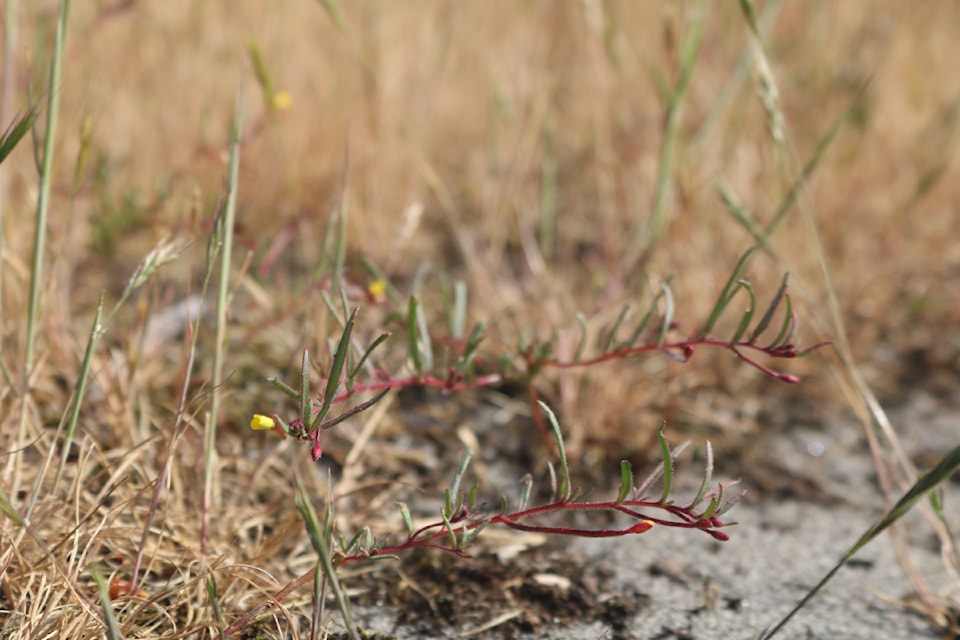Restoring habitat for one endangered plant unwittingly revealed a second at-risk species in the same location.
The dune ecosystem of Witty’s Beach, it's home to the contorted-pod evening primrose – a tiny plant only known to be in eight places across Canada. Listed as endangered, the plant thrives in the CRD park thanks to waves of staff and volunteers with the Metchosin Biodiversity Project tearing out the deep green and bright yellow Scotch broom for the past couple years.
“Restoration of the dune ecosystem at Witty’s Beach is a long-term project, though our initial results are encouraging,” said Andy MacKinnon a Metchosin ecologist who has led local efforts in restoration at Witty’s Lagoon Regional Park.
The community has invested a huge among of time and energy, McKinnon said, so the response by the plant is heartening.
In 2002, there were 70 plants documented, 50 in 2019, 70 in 2020 and by 2022 there were about 375. Broom busting in 2022 and 2023 saw truckloads of the invasive plant hauled off the spit and CRD staff built the split rail fence na posted signs.
In 2023, there were 3,274 contorted-pod evening primrose.
“However, the goal all along is to expand the area we have removed the broom from and the area within the split rail fence,” said McKinnon. “Removal of broom and other invasive vegetation is something that will have to go on for the net 100 years or so anyway, it just keeps coming back.”
Making way for the natural ecosystem to rejuvenate, a second endangered plant started reappearing.
“It’s a beautiful plant called Howell's triteleia. That was apparently there all along but we never saw it because of the dense broom cover,” McKinnon said.
The bid to restore contorted-pod evening primrose is the primarily reason Witty’s Beach was recently named a Canadian Key Biodiversity Area. The contorted-pod evening primrose is a key factor fitting two criteria: a threatened vascular plant and a geographically restricted vascular plant.
The Metchosin dune ecosystem is one of 29 KBA in B.C. and 153 in all of Canada, so it’s a big deal, says McKinnon.
“It’s quite an extraordinary thing and we couldn’t be happier about it. The designation is quite an honour.”
KBA were developed as a global standard by the International Union for the Conservation of Nature in 2016 to capture biodiversity elements within a site using a single tool. Now adapted for a Canadian context, the designation is important to maintaining global biodiversity.
Other south Island KBA include Kohweechela (Mary Tod Island), Trafalgar Park, Uplands Park - Cattle Point, XwaYen (Race Rocks), Fort Rodd Hill, Christmas Hill, Trial Islands, Gonzales Point, Sahsima (Harling Point), Durrance Lake - Cole Hill.
Explore Canada’s KBA online at https://kbacanada.org/explore/map-viewer/.



